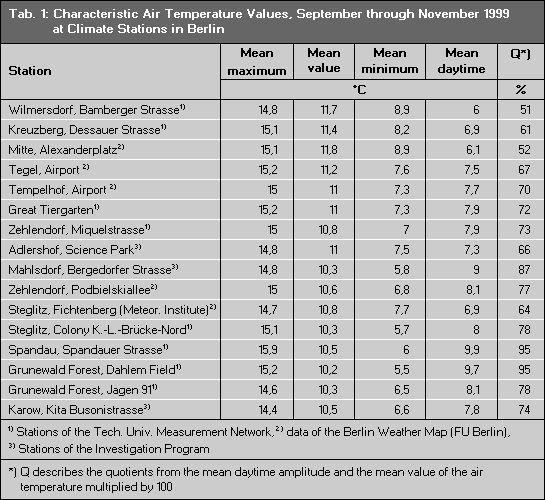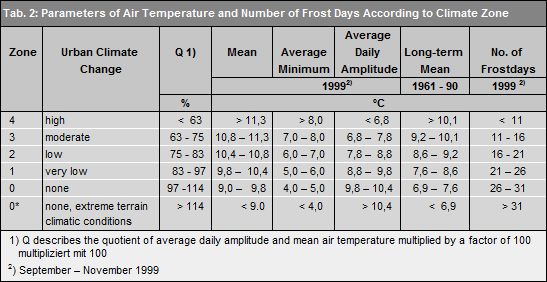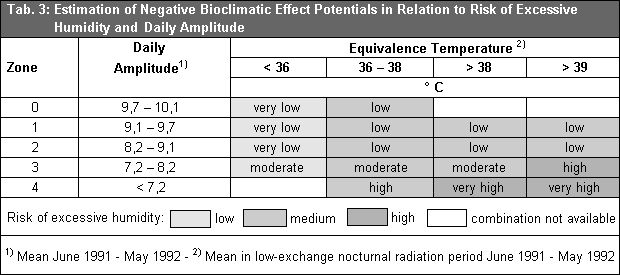Annual mean maximum and minimum temperatures from June 1991 through May 1992 were calculated for all measuring points on the individual monitoring routes (cf. Map 04.04.4). The West Berlin measurements were taken between 1981 and 1983, and were calculated for 1991-‘92 on the basis of data from long-term climate stations. Measurements for East Berlin and the surrounding countryside were taken in 1991 or 1992. Supplementary measurements: In 1999, a total of 12 measurement trips were conducted on three routes. This resulted in 1935 test points, which were measured four times each. At the same time, the wind measurement was taken at 80 test points. Three climate stations were established especially for the check-up period. Taking into account all the time periods, 162 measurement trips with 3735 test points along 37 measurement routes, and the data of 42 measurement stations were evaluated. The measurement points
were assigned to climatic zones, and point values on surfaces were interpolated.
Negative Bio-climate Effects
The superimposition of climate zones onto the distribution of equivalent temperatures during low-exchange weather conditions in 1991 (cf. Map 04.04.3) enables a depiction of areas at risk of excessive humidity. Equivalent temperature is derived from air temperature and the latent warmth potentially available by condensation of the given water vapor. The risk of excessive humidity was calculated on the basis of low equivalent temperatures because the available measurements of temperature and water vapor content of the air were taken at night. Areas greatly at risk of excessive humidity were defined on the basis of these conditions to be in Zone 4 at equivalent temperatures exceeding 38 °C, and in zone 3 at equivalent temperatures exceeding 39 °C. A classification of minimal risk of excessive humidity was assigned at equivalent temperatures under 36 °C, regardless of the climate zone’s location. The matrix presented in Table 3 for risk of negative
bio-climatic effects was derived by correlating the probability of risks of excessive humidity and the various nocturnal cooling values. The database was updated (2000). Additional surveys for this parameter can be found in the Map 04.09 Bioclimate -Day and Night.



